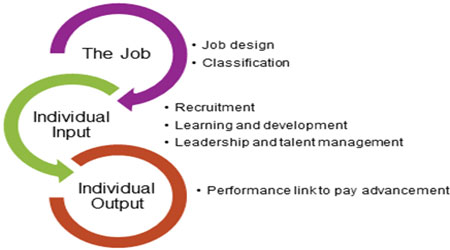Job Classification
Job classification is a system for objectively and accurately defining and evaluating the duties, responsibilities, tasks, and authority level of a job. The job classification, done correctly, is a thorough description of the job responsibilities of a position without regard to the knowledge, skills, experience, and education of the individuals currently performing the job.

Job classification is most frequently, formally performed in large companies, civil service and governmentemployment, nonprofit agencies, and colleges and universities. The approach used in these organizations is formal and structured withpay or salary gradesattached to the results of the job classification. In summary, the results of a job classification create parity in job titles, consistent job levels within the organization hierarchy, and salary ranges that are determined by identified factors. These factors include market pay rates for people doing similar work in similar industries in the same region of the country, pay ranges of comparable jobs within the organization, andthe level of knowledge, skill, experienceand educationneeded to perform each job.

Informal forms of job classification are used even in smaller and mid-sized companies and agencies to generate a sense of fairness across equivalent employee jobs. This form of job classification can be as simple as grouping similar positions in a broadband.

The Hay System of Job Classification
One popular, commercial job classification system is the Hay Classification system. The Hay job classification system assigns points to evaluate job components to determine the relative value of a particular job to other jobs. The Hay method measures three components in all jobs: the knowledge required, the problem solving required, and the level of accountability.

The Hay method compares the relative value of comparable jobs to maintain parity across an organization. For purposes of larger organizations with many departments and locations, union represented jobs, and organizations with hierarchical, rigid pay or salary grades, and needed internal equity, a system such as Hay, is appropriate. Working with Hay job classification, an evaluator uses a job evaluation instrument or questionnaire that is filled out by thedepartment requesting the job or evaluation.

Trained to appropriately assign points, the evaluator assigns points to determine where to place a job in the job classification system. The placement of the job determines the pay or salary grade within the organization'scompensation system.

